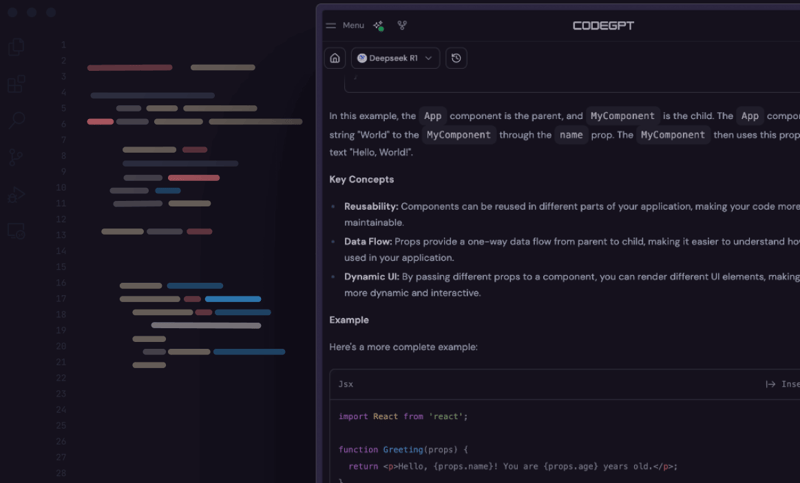
The Enterprise AI Revolution: Decoding the Surge in GPT Deployment for Development and Beyond
The Dawn of a New Enterprise Era: AI Moves from Lab to Live Production
The conversation surrounding Generative Pre-trained Transformers (GPT) has fundamentally shifted. What began as a fascinating research experiment, captivating the public with its creative and conversational prowess, has now matured into a powerful, enterprise-grade technology. We are witnessing a pivotal moment in technological history: the mass deployment of sophisticated AI models into the core workflows of businesses worldwide. The latest GPT Deployment News isn’t just about new chatbot features; it’s about the deep integration of AI into critical infrastructure, most notably in software development, where AI coding assistants are rapidly becoming indispensable. This transition from novelty to necessity signals a profound change in how companies build products, serve customers, and innovate. The focus is no longer on *if* generative AI will be used, but *how* it can be deployed efficiently, securely, and at scale to create a sustainable competitive advantage. This article explores the technical landscape, strategic implications, and best practices driving this enterprise AI revolution.
Section 1: The Expanding Footprint of GPT in the Enterprise
The initial wave of enterprise AI adoption was largely driven by consumer-facing applications, but the latest GPT Trends News reveals a much deeper integration into internal, high-value processes. The most prominent example of this is the widespread adoption of AI-powered coding assistants, which are fundamentally altering the software development lifecycle (SDLC).
The Rise of AI Coding Assistants: A Paradigm Shift in Development
Tools powered by advanced GPT Code Models are no longer a niche for early adopters. Major technology companies and startups alike are integrating these assistants to streamline development, enhance code quality, and accelerate innovation. These AI partners assist developers with a range of tasks, from autocompleting complex code blocks and generating unit tests to translating code between languages and explaining legacy systems. This trend is a major focus of recent GPT-4 News, as its advanced reasoning capabilities make it particularly adept at understanding complex codebases. The productivity gains are tangible: developers report faster completion of routine tasks, allowing them to focus on higher-level architectural challenges. Furthermore, these tools act as powerful learning aids, helping junior developers get up to speed on new technologies and internal coding standards more quickly. The success of these GPT Assistants News stories is creating a ripple effect, pushing companies to explore similar integrations across other departments.
Beyond Code: The Broadening Scope of GPT Applications
While software development is a flagship use case, the deployment of GPT models is rapidly expanding across the enterprise. The latest GPT Applications News highlights a diverse range of implementations:
- GPT in Marketing News: Teams are using custom models to generate hyper-personalized ad copy, email campaigns, and social media content at a scale previously unimaginable.
- GPT in Finance News: Financial institutions are deploying AI for complex document analysis, fraud detection, and generating market summary reports, leveraging models fine-tuned on proprietary financial data.
- GPT in Legal Tech News: Law firms are using GPT for contract review, legal research, and drafting initial legal documents, significantly reducing manual labor.
- GPT in Healthcare News: From summarizing patient records to assisting in preliminary diagnostic reports, GPT in Healthcare News points to a future of AI-augmented medical professionals, though this area requires navigating strict GPT Regulation News and privacy concerns.
This widespread adoption is fueled by advancements in GPT APIs News, making it easier than ever to integrate powerful language capabilities into existing software platforms and tools.
Section 2: The Technical Gauntlet: Overcoming GPT Deployment Challenges
Deploying large language models like GPT-4 into production environments is a complex engineering challenge. It involves much more than simply calling an API. Enterprises must grapple with issues of cost, latency, throughput, and hardware constraints. Success hinges on a deep understanding of model optimization and infrastructure management.

Taming the Giants: Model Optimization for Efficiency
The raw power of state-of-the-art models comes with immense computational cost. The latest GPT Efficiency News is dominated by techniques designed to make these models smaller, faster, and cheaper to run without catastrophic losses in performance. Key strategies include:
- GPT Quantization News: This involves reducing the precision of the model’s weights (e.g., from 32-bit floating-point numbers to 8-bit integers). This dramatically shrinks the model’s memory footprint and can significantly speed up inference on compatible hardware.
- GPT Distillation News: This “student-teacher” approach involves training a smaller, more efficient “student” model to mimic the output of a larger, more powerful “teacher” model. The result is a compact model that retains much of the original’s capabilities for a specific task.
- GPT Compression News: Techniques like pruning, which involves removing redundant or unimportant weights from the neural network, are also gaining traction to create leaner, more agile models suitable for deployment on the edge.
These optimization techniques are critical for applications requiring real-time responses or deployment on resource-constrained devices, a key topic in GPT Edge News and GPT Applications in IoT News.
The Inference Infrastructure: Hardware, Engines, and Strategy
Running an optimized model efficiently requires a robust infrastructure stack. The GPT Hardware News continues to be dominated by GPUs from manufacturers like NVIDIA, but specialized AI accelerators are also emerging. On the software side, GPT Inference Engines News highlights the importance of tools like TensorRT-LLM, vLLM, and Hugging Face’s TGI, which are specifically designed to maximize performance for large language models. A crucial strategic decision for any organization is the deployment model:
- API-Based: Using services from providers like OpenAI offers simplicity and scalability but can be costly and offers less control over data privacy and model customization. –Self-Hosted (Private Cloud/On-Premise): Deploying models, often from the GPT Open Source News ecosystem (like Llama or Mistral), provides maximum control, security, and potential cost savings at scale, but requires significant MLOps expertise.
Balancing these factors is key, with many companies adopting a hybrid approach, using APIs for general tasks and self-hosting for specialized, proprietary models.
Section 3: Strategic Imperatives and Real-World Impact
Successfully deploying GPT technology is not just a technical victory; it’s a strategic one. Companies that master this domain can build powerful, defensible moats around their products and services. This involves moving beyond off-the-shelf models to create customized, autonomous, and ethically governed AI systems.
Customization as a Competitive Differentiator
The real value for many enterprises lies in tailoring models to their specific domain. This is where GPT Fine-Tuning News and GPT Custom Models News become critically important. By fine-tuning a base model on proprietary datasets—be it internal codebases, customer support logs, or financial records—a company can create an AI that understands its unique context, terminology, and processes. For example, a marketing firm can fine-tune a model on its best-performing campaigns to generate content that perfectly matches its brand voice. This level of customization transforms a general-purpose tool into a specialized, high-value asset that competitors cannot easily replicate. The quality and uniqueness of the GPT Datasets News used for this training become a core part of the company’s intellectual property.
The Next Evolution: From Assistants to Autonomous Agents

The current generation of AI tools largely functions as powerful assistants, responding to direct user prompts. However, the most exciting GPT Future News revolves around the development of autonomous agents. As highlighted in emerging GPT Agents News, these systems can take a high-level goal, break it down into a series of steps, execute those steps using various tools (like APIs or web browsers), and self-correct based on the results. Imagine an agent tasked with “analyzing competitor sentiment for our new product launch.” It could autonomously browse social media, access news APIs, summarize the findings, and generate a comprehensive report without step-by-step human guidance. This represents a monumental leap from simple task completion to complex problem-solving, promising to automate entire workflows.
Navigating the Ethical and Regulatory Maze
With great power comes great responsibility. The widespread deployment of GPT models brings a host of ethical challenges to the forefront. Key areas of focus in GPT Ethics News and GPT Safety News include ensuring model outputs are not harmful, biased, or factually incorrect. Companies must actively address the issues highlighted in GPT Bias & Fairness News by carefully curating training data and implementing post-processing filters. Furthermore, GPT Privacy News is a major concern, especially when models are trained on or interact with sensitive user data. As governments begin to roll out AI-specific regulations, establishing a robust governance framework is no longer optional; it’s a prerequisite for sustainable, long-term deployment.
Section 4: Best Practices and Recommendations for Enterprise Deployment
Navigating the complex world of GPT deployment requires a clear strategy. Simply adopting the latest technology without a plan can lead to wasted resources and failed projects. The following recommendations can help organizations maximize their chances of success.
Adopt a Phased, Value-Driven Approach
Instead of attempting a massive, company-wide AI overhaul from day one, start with targeted pilot projects in areas with clear potential for high ROI. For a development team, this could be integrating a coding assistant for a single project and meticulously tracking productivity metrics using GPT Benchmark News and internal data. For a support team, it might be deploying a GPT Chatbots News tool to handle a specific category of customer inquiries. This phased approach allows the organization to build expertise, demonstrate value to stakeholders, and learn from early mistakes before scaling up. The key is to focus on solving real business problems, not just deploying technology for its own sake.
Invest in a Robust MLOps for LLMs
Large language models are not “set it and forget it” technologies. They require continuous monitoring, management, and improvement. This means investing in a specialized MLOps (Machine Learning Operations) framework tailored for LLMs. This includes tools and processes for:
- Model Versioning: Tracking different fine-tuned models and their performance.
- Performance Monitoring: Continuously evaluating GPT Inference News metrics like latency, throughput, and accuracy in the production environment.
- Feedback Loops: Creating systems to capture user feedback and problematic outputs to inform the next round of fine-tuning.
- Cost Management: Monitoring API usage and inference costs to ensure financial viability.
A strong MLOps foundation is the backbone of any successful, scalable AI deployment.
Choose the Right Model for the Job
The GPT Ecosystem News is vast and growing, with a wide array of models available, from massive proprietary ones like those from OpenAI to a flourishing open-source community. Don’t assume the largest model is always the best. For a simple text classification task, a smaller, distilled open-source model might be far more cost-effective and faster than a massive model like GPT-4. Consider the trade-offs between performance, cost, speed, and customizability. The rise of strong competitors, as seen in GPT Competitors News, provides more options than ever before, empowering organizations to select the optimal tool for each specific use case.
Conclusion: The Strategic Imperative of GPT Deployment
The era of experimental AI is over. The latest GPT Models News confirms that we have entered the age of scaled, enterprise-wide deployment. From revolutionizing software development with AI coding assistants to optimizing workflows across every business unit, GPT technology has become a critical engine for innovation and efficiency. However, success is not guaranteed. It requires a masterful blend of technical acumen to overcome challenges in optimization and infrastructure, strategic foresight to build customized and autonomous systems, and a steadfast commitment to ethical and responsible implementation. The organizations that thrive in this new landscape will be those that view GPT deployment not as a mere IT project, but as a core strategic imperative that will define their competitive edge for years to come. The future of AI in the enterprise is here, and it’s being deployed right now.



